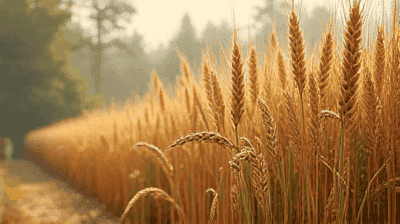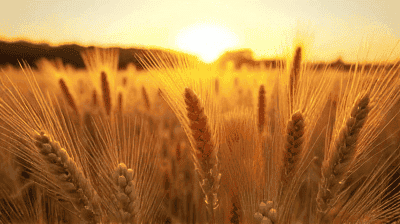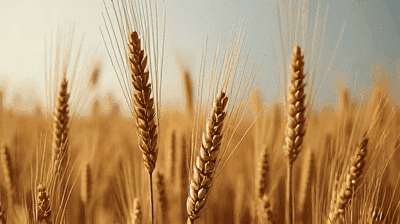
As the challenges of climate change and global food insecurity intensify, the quest for sustainable agricultural practices has never been more critical. In this context, ancient grains—cereal grains that have been cultivated for thousands of years—are gaining renewed interest as viable, climate-resilient crops for modern agricultural systems. These grains, which include quinoa, amaranth, millet, spelt, and farro, offer unique nutritional benefits and are often more resilient to changing climatic conditions than more commonly grown staples.
Ancient grains are varieties of grains that have remained largely unchanged over the centuries, retaining their original characteristics. Unlike modern hybrid grains, which have been selectively bred for specific traits, ancient grains are often considered more genetically diverse. Some of the most well-known ancient grains include:
Quinoa: Originating from the Andean region of South America, quinoa is often praised for its high protein content and essential amino acids.
Amaranth: Cultivated by the Aztecs and other ancient civilizations, amaranth is a drought-resistant grain that is rich in protein, fiber, and micronutrients.
Millet: A staple grain in many parts of the world, particularly in Africa and Asia, millet is known for its resilience to harsh growing conditions and nutritional benefits.
Spelt: An ancient cousin of modern wheat, spelt is higher in protein and fiber and contains various vitamins and minerals.
Farro: An ancient strain of wheat, farro has a nutty flavor and chewy texture, making it a popular ingredient in salads and grain bowls.
Ancient grains have been vital to human civilization for thousands of years, serving as staple foods for various cultures. They have formed the basis of diets in regions ranging from the Americas to Europe and Asia. Many of these grains were domesticated during the Neolithic era, marking a significant shift in human society from nomadic hunter-gatherer groups to settled agricultural communities.
In addition to providing sustenance, ancient grains have played crucial roles in cultural practices and traditions. For example, quinoa was sacred to the Inca civilization, while amaranth was revered by the Aztecs in religious ceremonies. As we look toward the future, the revival of these grains may offer valuable insights into sustainable food systems.

One of the most compelling reasons to promote ancient grains is their adaptability to climate change. Many ancient grains have evolved to thrive in harsh environments, making them more resilient to factors such as drought, poor soil quality, and pest pressures. Key attributes of ancient grains that contribute to their adaptability include:
Drought Resistance: Ancient grains like millet and amaranth are well-suited for arid and semi-arid climates, where water scarcity is a growing concern.
Soil Resilience: Many ancient grains can grow in less fertile soils, requiring fewer chemical inputs and serving as a valuable option for sustainable farming practices.
Biodiversity: The genetic diversity found in ancient grains can lead to improved resistance to diseases and pests, reducing the reliance on chemical pesticides and fertilizers.
By incorporating ancient grains into agricultural systems, farmers can cultivate crops that are better suited to changing environmental conditions, helping to secure food production in the face of climate challenges.
Sustainable agriculture emphasizes the importance of soil health, as it is the foundation of productive farming systems. Ancient grains can contribute to improved soil health through the following mechanisms:
Crop Rotation: Including ancient grains in crop rotation systems can enhance soil fertility and break pest cycles. For example, rotating quinoa or millet with legumes can improve nitrogen levels in the soil.
Cover Cropping: Ancient grains can be used as cover crops to prevent soil erosion, improve organic matter content, and enhance soil structure.
Reduced Tillage: Some ancient grains are suitable for low-till or no-till farming methods, which can help maintain soil moisture, reduce erosion, and decrease carbon emissions from soil disturbances.
The incorporation of ancient grains into sustainable farming practices can foster regenerative approaches that replenish and protect vital soil resources.
The water-intensive nature of conventional agriculture poses significant challenges in many regions, particularly as climate change exacerbates water scarcity. In contrast, ancient grains such as millet, quinoa, and sorghum are known for their water efficiency:
Minimal Irrigation Needs: Ancient grains often require less water than modern crops, making them suitable for cultivation in dryland farming systems.
Drought Recovery: These grains can quickly recover from drought conditions, enabling farmers to mitigate risks associated with variable weather patterns.
Resilient Roots: Many ancient grains have deeper root systems, allowing them to access water and nutrients from lower soil layers, even during dry spells.
By promoting water-efficient ancient grains, farmers can reduce their reliance on irrigation and adapt to changing moisture availability.
Ancient grains are celebrated for their impressive nutritional profiles compared to modern grains. Many ancient grains provide a wealth of vitamins, minerals, and other beneficial compounds:
High Protein Content: Quinoa and amaranth boast complete proteins, containing all nine essential amino acids, which are crucial for human health and development.
Fiber-Rich: Ancient grains are typically higher in fiber than refined grains, supporting digestive health and helping to regulate blood sugar levels.
Vitamins and Minerals: Ancient grains provide essential nutrients such as iron, magnesium, zinc, and B-vitamins, contributing to overall health and wellness.
Antioxidants and Phytochemicals: Many ancient grains are rich in antioxidants and phytochemicals, which may help reduce the risk of chronic diseases.
By incorporating ancient grains into our diets, individuals can benefit from nutrient-dense foods that support health and well-being.
Ancient grains offer a unique taste and texture that can elevate various culinary creations. Their versatility makes them suitable for a wide range of dishes, including:
Salads and Bowls: Quinoa and farro serve as hearty bases for salads and grain bowls, allowing for creativity with vegetables, proteins, and dressings.
Baked Goods: Ancient grains can be incorporated into bread, muffins, and other baked goods, adding flavor and nutrition.
Side Dishes: Millet and amaranth can be served as nutritious side dishes or used in pilafs and grain-based casseroles.
Breakfast Options: Ancient grains can be prepared as warm breakfast cereals, offering a nutritious start to the day.
The culinary potential of ancient grains encourages experimentation in the kitchen, helping to revive interest in these traditional foods.

To promote the cultivation of ancient grains, agricultural programs can develop crop resilience initiatives that focus on education, resource sharing, and research. Key strategies may include:
Education and Training: Providing farmers with information and training on the cultivation of ancient grains, including best practices for soil health and water management.
Research and Development: Investing in research to explore the benefits of ancient grains, including trials that assess their ecological performance and nutritional value.
Community Support: Establishing support networks for farmers that focus on sustainable practices and community collaborations to share resources and experiences.
By supporting farmers interested in ancient grains, agricultural programs can help diversify production and increase resilience to climate change.
Creating viable markets for ancient grains is crucial to their success and adoption. Initiatives to support market development may include:
Consumer Awareness Campaigns: Promoting the health and environmental benefits of ancient grains to encourage consumer interest and demand.
Partnerships with Food Producers: Collaborating with chefs, restaurants, and food manufacturers to incorporate ancient grains into menus and product offerings.
Local Sourcing: Encouraging local food systems that connect consumers directly with farmers, fostering community engagement and supporting regional agriculture.
By establishing strong markets for ancient grains, communities can create demand that encourages farmers to grow these sustainable crops.
Government policies play a vital role in supporting sustainable agricultural practices and promoting ancient grains. Key policy measures may include:
Incentives for Sustainability: Providing financial incentives for farmers who cultivate ancient grains and adopt sustainable practices.
Research Funding: Allocating resources for research on ancient grains and their benefits, focusing on breeding programs, pest management, and climate adaptability.
Education and Outreach Programs: Encouraging extension services and outreach programs that inform farmers and consumers about the advantages of ancient grains.
Food Policy Initiatives: Integrating ancient grains into public food procurement programs, such as school lunches and institutional catering, to promote their consumption and support regional farmers.
By enacting supportive policies, governments can create an environment conducive to the growth and adoption of ancient grains in sustainable agriculture.
Quinoa has experienced a resurgence in popularity in recent years, particularly in its native regions of the Andes. Recognized as a superfood, quinoa is now cultivated by many smallholder farmers while also being exported globally. Key success factors include:
Cultural Reclamation: The promotion of quinoa has helped revitalize traditional farming practices and maintain cultural heritage among indigenous communities.
Economic Opportunities: Quinoa farming has improved economic stability for many farmers, providing new income sources through domestic and international markets.
Sustainable Practices: Many quinoa producers adopt sustainable farming methods that protect soil health and biodiversity, aligning with principles of regenerative agriculture.
Amaranth has been recognized for its nutritional value and adaptability, making it a valuable crop in various regions, including Africa and Asia. Success stories include:
Drought Resilience: Amaranth is a preferred crop in areas prone to drought, as it requires less water and can thrive in poor soils.
Community Initiatives: Various NGOs and organizations have promoted amaranth cultivation among local communities, encouraging its adoption as a staple food source.
Nutritional Awareness: Increased awareness of amaranth's health benefits has led to greater demand, fostering local markets and food security.
Millet is often referred to as a "forgotten grain" but has gained recognition for its resilience and nutritional value. Successful initiatives include:
Sustainable Farming Programs: Organizations have implemented programs to encourage smallholder farmers to cultivate millet, emphasizing its low input requirements.
Culinary Education: Efforts to promote millet in local cuisines have led to recipe development and culinary workshops, increasing consumer interest.
Research and Advocacy: Research institutions are actively studying the benefits of millet, providing data to support its inclusion in dietary recommendations.

Future advancements in ancient grains will likely focus on breeding programs aimed at enhancing desirable traits such as yield, pest resistance, and climate adaptability. Key areas of research may include:
Gene Editing Techniques: Utilizing modern breeding techniques, including CRISPR, to enhance ancient grains while maintaining their core characteristics.
Climate Adaptation Studies: Conducting research to study ancient grains' adaptability to various climate scenarios, helping to identify the best options for different regions.
Nutritional Profiling: Further investigation into the nutritional profiles of ancient grains can inform breeding efforts to optimize health benefits.
Global collaboration will be essential to fully leverage the benefits of ancient grains. Cross-border partnerships can support research, share knowledge, and promote best practices. Strategies may include:
International Conferences: Hosting events that bring together researchers, farmers, and policymakers to discuss ancient grains and their role in sustainable agriculture.
Exchange Programs: Establishing programs that allow farmers and researchers to share knowledge and expertise related to ancient grains and best practices.
Global Networks: Creating networks that connect stakeholders involved in ancient grain production, enhancing communication and resource-sharing across regions.
Ancient grains represent a powerful solution to the pressing challenges of climate change, food security, and sustainable agriculture. With their inherent resilience, rich nutritional profiles, and cultural significance, these crops provide an opportunity to enhance agricultural diversity and promote sustainable farming practices.
By revitalizing interest in ancient grains, we can develop a more sustainable food system that not only benefits the environment but also nourishes communities and preserves cultural heritage. The journey toward embracing ancient grains is essential as we seek to build a more resilient and equitable food future for generations to come.